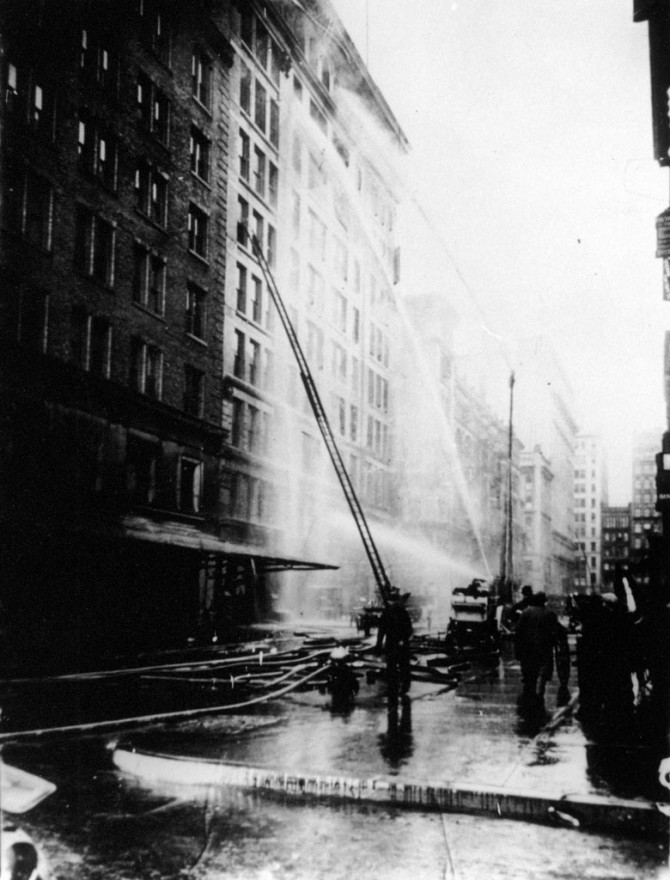New York City events honor Triangle fire victims, focus on new activists
By David Ticzon
Marking the 107th anniversary of a turning point in labor history and law, the 1911 Triangle Shirtwaist Co. Factory fire in New York City, commemoration events this month will remember its victims and focus on a new generation of activists who organize against global sweatshops.
Artist Ruth Sergel and Nick Salvatore, Cornell professor of labor relations, law and history, will lead a presentation and discussion, “Triangle Fire: See You in the Streets,” March 26 at 6:30 p.m. at the Center for Jewish History at 15 W. 16th St. in Manhattan.
Sergel is a founder of the Remember the Triangle Fire Coalition, which organized the centennial commemoration of the tragedy. The fire broke out March 25, 1911, near closing time at the factory; 18 minutes after the fire erupted, 146 workers were dead.
Many of the primarily immigrant young Jewish and Italian women workers, along with a few men, were trapped. One door of what might have been a ninth-floor escape route was locked because management feared pilferage of cloth.
More than 100 years later, its impact is still felt.
On March 25, activists will participate in “CHALK,” remembering the dead and writing their names in chalk on the sidewalks in front of their addresses in the Lower East Side, Little Italy and elsewhere. Activists will engage passersby in conversation about the fire and contemporary worker safety issues.
The Triangle fire was the worst industrial disaster in New York history. It spurred labor organizers and others to enact progressive legislation and shaped debate on building codes and factory regulations.
Cheryl Beredo will join Salvatore and Sergel in a discussion moderated by Jonathan Boyarin. Beredo is director of the Kheel Center for Labor-Management Documentation and Archives in Catherwood Library in the ILR School. Boyarin is the Paul and Bertha Hendrix Director of Jewish Studies and the Diann G. and Thomas A. Mann Professor of Modern Jewish Studies in the Departments of Anthropology and Near Eastern Studies.
The Kheel Center holds records of the Triangle Fire. The tragedy “raised public consciousness and reformers were successful in demanding factory inspection laws to inspect things such as fire escapes and whether doors were locked,” said Ileen DeVault, director of The Worker Institute at Cornell and an ILR School labor history professor.
Salvatore said the fire helped build the U.S. labor movement and galvanized others, including eyewitness Frances Perkins, the fourth U.S. Secretary of Labor and first woman appointed to a U.S. presidential cabinet. Perkins offered her recollections of the fire in a lecture in 1964.
One of the most poignant annual commemoration traditions involves the New York City Fire Department, whose rescue ladders could not reach the victims. “Amazing Grace” is played as a ladder is raised to the seventh floor; a lone fireman climbs it, removes his hat and bows his head in mourning.
Sponsors of the commemoration events include the Jewish Studies Program, the ILR School, the Center for Jewish History and the American Jewish Historical Society. Tickets are available online.
David Ticzon is a writer intern for the ILR Department of Communications and Marketing.
Media Contact
Get Cornell news delivered right to your inbox.
Subscribe

